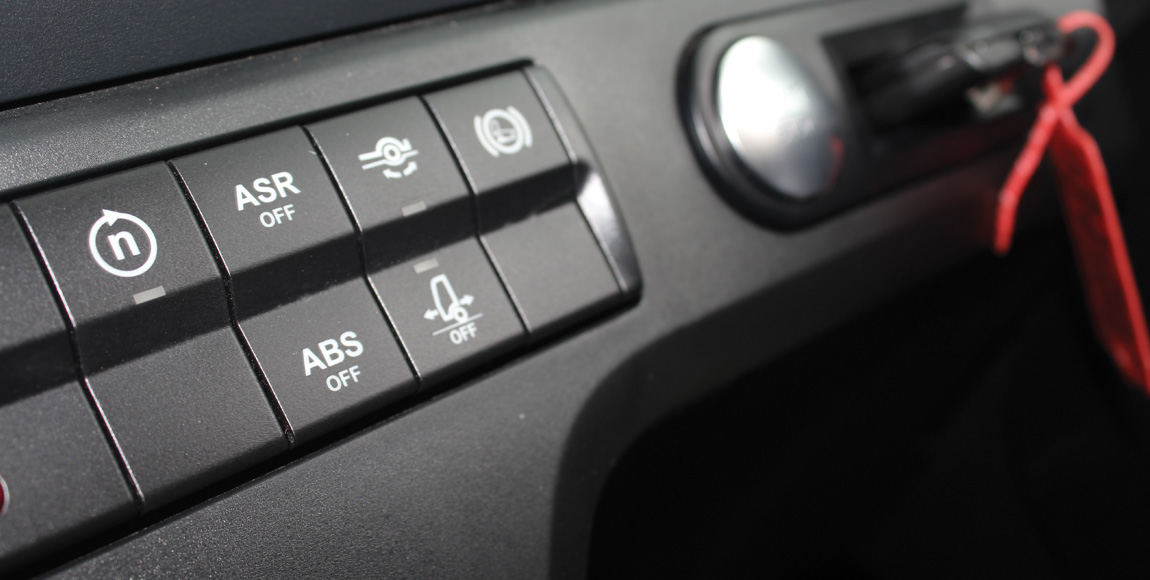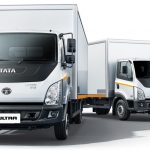Bringing advanced technology to construction

The long-awaited replacement for the Mercedes-Benz Axor has arrived. GAVIN MYERS meets the impressive new Arocs.
Alot has happened at Mercedes-Benz in the past year and, to date, two specific developments have been rather significant. The first was in the middle of 2018 when the new Actros finally made its local debut. This was noteworthy for the brand, as the popularity of the new model allowed it to claim a 19,4 percent market share last year and move back into a market-leading position.
The second development took place on January 1, and saw Daimler Trucks and Buses Southern Africa (DTBSA) establish itself as a separate entity from Mercedes-Benz South Africa.
This is in line with Daimler’s new corporate strategy, which has split the group into three independent companies – Daimler Mobility AG (financial and mobility service), Mercedes-Benz AG (passenger cars and vans) and Daimler Truck AG (commercial vehicles).

The thinking is that, when operating as independent legal entities, the three companies will be able to optimally serve their different customer bases. According to Jasper Hafkamp, CEO of DTBSA, the move will enable Daimler trucks to “become the biggest global specialist in trucks and buses, the largest global manufacturer, and a leader in commercial vehicle innovation”.
This leads us to what is now the third significant development for the brand – the launch of the first new vehicle under the new DTBSA legal entity, the Arocs. While the new Actros is dedicated to heavy-duty long haul, the new Arocs has been tasked with serving not only the construction segment, but also the heavy-duty distribution segment.
Specifically designed for customer needs in each of these individual segments, the rigid-frame Arocs will initially be launched with four variants: two for distribution and two for construction (which also have applications in timber and mining). While they may look similar, Mercedes-Benz has gone to great lengths to ensure each version of the Arocs is fit for purpose.
The distribution vehicles will include the Arocs 2636L/57 6×2 freight carrier, which is designed for city and regional distribution, and the Arocs 3345/48 6×4 freight carrier with its increased ground clearance, steel bumpers and swivel steps for on- and off-highway distribution applications.
Two distribution-oriented cabs are available: the M-Cab and L-Cab ClassicSpace featuring generous interior and storage space. The cabs also feature the newly developed seats that have wider seat cushions.
While the fundamentals need to be sound for any vehicle to be among the leaders in its class, it’s in the on-board technology that the new Arocs for distribution shows its advantage. A comprehensive range of safety equipment is fitted as standard, including the likes of a driver airbag, Lane Assist and Attention Assist – a first for the segment, says the company.
Operating together, Attention Assist monitors the driver’s level of alertness and automatically activates the Lane Assist function should it detect signs that the driver may be suffering from fatigue.
Distribution models are also fitted as standard with the Fleetboard telematics system.

Powering this range is the 12,8-litre, six-cylinder OM460 Euro-3 engine with either 265 kW (360 hp) or 330 kW
(450 hp). It’s combined with a direct-drive, 12-speed automated PowerShift 3 transmission and hypoid axles. Side-cab air deflectors on the Arocs 2636L/57 ensure aerodynamic efficiency by reducing wind turbulence between cab and body at high speeds.
The range of Arocs construction vehicles will initially include the Arocs 3336K/36 6×4 tipper chassis and the Arocs 3236B/51 8×4 mixer chassis. One cab variant is available: the S-Cab ClassicSpace.
Here, too, specific technology is employed to boost efficiency in typical off-road environments of the construction segment. This range features an “Off-road Drive” program that is optimised for the special requirements of construction-site traffic.
It supports economic driving and improved handling when pulling away or manoeuvring on building sites or when driving slowly along challenging terrain. Also aiding improved handling and stability are the 100 mm-wide rear springs.
The Arocs models for construction make use of the 256 kW (360 hp) version of the OM460 engine and 16-speed PowerShift 3 transmission.
Speaking of the OM460 engine, Maretha Gerber, head of Mercedes-Benz Trucks at DTBSA, says that the driveline has been tested for more than 16-million kilometres in South African conditions – and continuing.

“This new driveline has been developed to drive total cost of ownership (TCO). The aim was to contribute to lower fuel consumption and we expect savings of between three and five percent in the distribution segment,” she says.
Fleet operators can also ensure their drivers aim for those savings thanks to the Fleetboard Eco Support system that’s fitted across the range. This gives direct feedback to the driver, about his driving, for real-time operation optimisation.
“We’ve seen a swing in demand for safety features. Operators want their drivers and loads to be safe. Driver training will also be more and more important going forward. The driver fulfils an important role,” Gerber comments.
Fleet operators will also be pleased that turnaround times for delivery of their new vehicles will be shortened thanks to the pre-installed mounting brackets for body and equipment fitting.
In another attempt to reduce TCO, the new Arocs for distribution comes standard with a one-year/unlimited kilometre warranty and a five-year/650 000 km powertrain warranty. While the standard warranty is the same, this powertrain warranty is set at three-years/250 000 km/5 000 hours on construction models.
Furthermore, service contracts are available per customer needs – and flexible service intervals are set at up to 50 000 km on distribution models, and up to 35 000 km on construction models.
With the new Actros attracting more than 2 000 orders and a boasting a 23-percent conquest rate (new customers buying into the range), DTBSA hopes that the Arocs will be able to build on this success in its own right. And there are even more models to come.
Published by
Focus on Transport
focusmagsa




